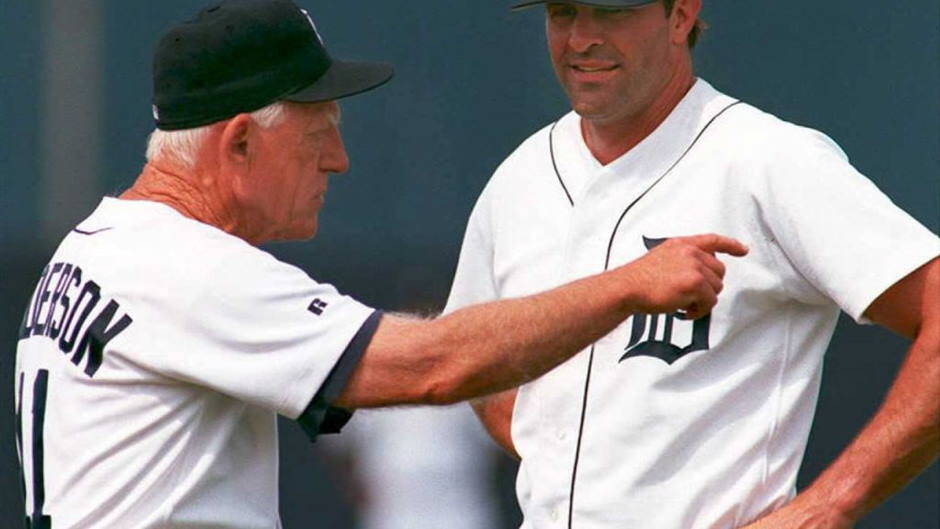 The Tipping Point
The Tipping Point
Each month we’ll offer a few tips in this space that may come in handy for the beginner as well as the experienced team owner.
Recently we received an email from a relative newcomer to Diamond Mind Online, who was finding the poor performance of his (“Classic” Standard League) teams “very deflating.” He was particularly disappointed in the performance of his pitchers overall, and the huge difference between one pretty good and one terrible season being turned in for two of his teams (playing in the same park, with very similar line ups) by Burt Hooton.
We offered him some basic advice on player evaluation and selection, which he said was very helpful, so we thought we’d repeat it here.
Without looking at your opponents’ line ups and parks, which certainly might make a difference in Hooton’s performance, I assume what you’re seeing is the natural variability/inconsistency of player performances, albeit in this case at the extremes of good and bad.
In real life, player performance is unpredictable and inconsistent, from day to day, week to week, season to season. Players in DMO will be similarly inconsistent, with weaker players having good stretches and seasons, and good players having poor ones. Burt Hooton, for example, had stretches from 1972-75 and 1979-82 where his ERA+ was 135, 107, 80, 112 and 122, 97, 148, 87, respectively. You should not expect greater consistency or predictability from your DMO players than players display in real life.
Looking at your most recent game (team IV), you still have a Fr 2B, LF and CF and a Pr RF (against R pitching). That just isn’t going to cut it. If you look at the most successful owners/teams, they would have a lot of Vg fielders, with a few Ex and maybe an Av or 2. They would rarely if ever have a Fr or Pr starting in the field. With such a huge player pool to select from, there simply is no reason to. Yes, these players played in the field in real life, but in real life there were only so many major league caliber players to go around at any one time. In DMO, there are many, many more.
As far as player selection, I’m not sure what you’re using to select and compare players. My recommendation is sim stats/Standard Leagues/All Parks. When comparing players, the rough guide I use is that $1 million = 3 RC600 (for more expensive players … for players below, say, $5 million, I’d be looking at more like 4 RC600). To take account of fielding, for each level better than Av I add 8 RC600 to their total. For worse than Av, deduct 8 RC600 (unless I’m looking at the player as a DH, in which case I’d ignore fielding ratings). Things like Run, Err, throw, etc are “tie break” considerations for players who are relatively close.
Example: two CF’ers: A has RC600 of 72, is Av in CF, and has a salary of $6 million; B has RC600 of 68, is Vg in CF, and has a salary of $7 million. To B I’d add 8 RC600 for his Vg fielding rating, making his total 76, which is 4 better than A. His salary is $1 million more, which equates to 3 RC600, so by this rough comparison he is marginally better value. They would be close enough that I would look at things like Run, OF Throw, injury rating, handedness, etc, to see which was the better value and “fit” for my line up.
(I don’t apply any fielding adjustment to C range rating.)
It is expensive to make wholesale changes to your roster; the cost tends to offset the gain. For teams in progress, I would try to make as few changes as possible, with a refocus on building your next team from scratch.
Let’s add a couple of further observations:
You can have too much of a good thing. For example, there are only so many outs to go around, so I believe you will not get full benefit of your spend if you overdo it on Ex fielders.
You need to scale your spending to the role players fill. An obvious example of this principle is not to overspend on bench players and back-of-the-bullpen pitchers. But keep in mind also your batting order, and that the number of PA that will be taken from each spot over the course of the season goes down as you move down the order. (A 162-game season divided by 9 is 18. In general, the number 2 spot in the order will get 18 less PA than the leadoff spot, and so on, with the ninth spot in the order getting nearly 150 less PA than the leadoff spot.) Don’t overspend on your bottom-of-the-order hitters; save that money so that you can afford more potent bats at the top and in the middle of the order.
In general, plans like “all Ex fielders” or “all Ace pitchers” do not lend themselves to optimal team construction. Rather, a more or less balanced and complementary roster is the best starting point for success.
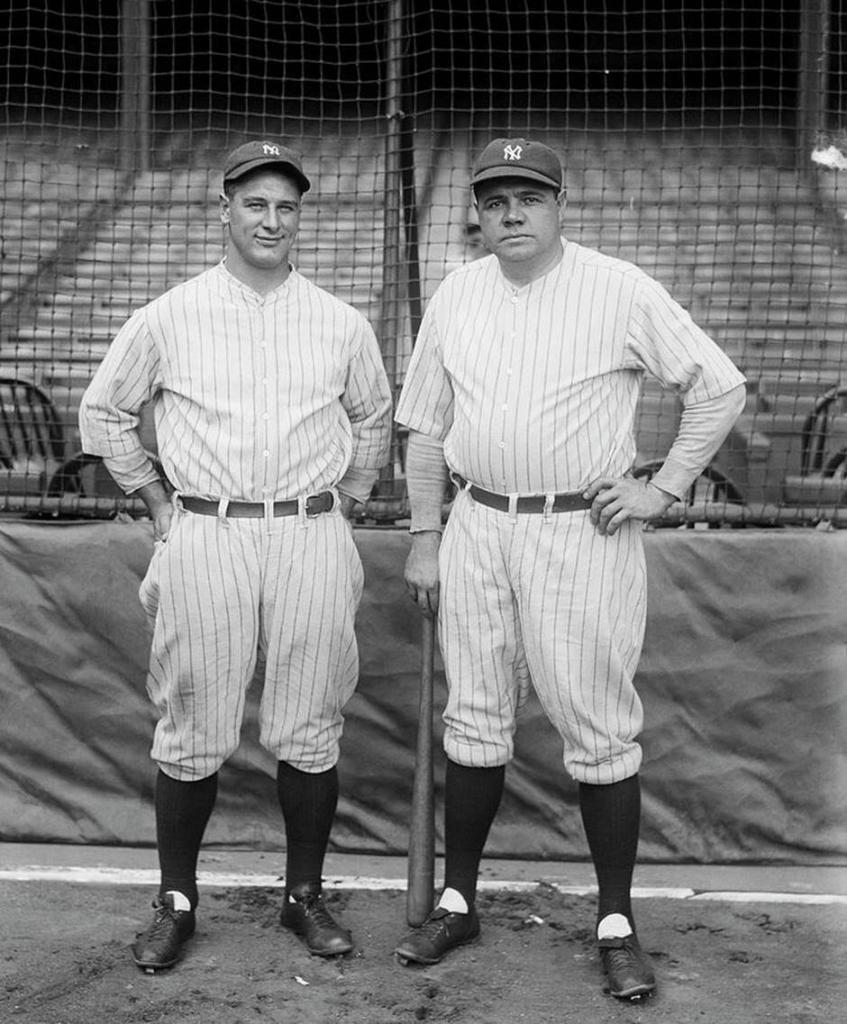 Diamond Mind Online All-Time Team
Diamond Mind Online All-Time Team
There have been quite a few “all-time” franchise teams posted on the message boards over the past few weeks.
This inspired us to put together an all-time line up of Diamond Mind single-season players.
The line up is drawn from the 1922-2019 seasons and consists of the highest-salaried player at each position.
So, without further ado …
Catcher: 1951 Roy Campanella $22,382,000
In the first of his three MVP seasons, Campy hit 33 HR with a .325 BA and .983 OPS.
First Base: 1927 Lou Gehrig $38,188,000
One of two players on the DMO SSG All-Time Team from the fabled Murderers Row ’27 Yankees (along with Babe Ruth), Gehrig walloped 47 HR and batted .373 with a 1.24 OPS in the first of his two MVP seasons.
Second Base: 1924 Rogers Hornsby $37,592,000
Over the five-year period from 1921-25, Rogers Hornsby hit .402, with a high of .424 in 1924. Although he would go on to win two MVP awards, he finished second in the voting that year to Dazzy Vance (28-6 2.16).
Third Base: 1980 George Brett $31,626,000
Brett won is sole MVP award in 1980, the year in which he made a bid to become the first .400 hitter since Ted Williams last accomplished the feat in 1941. He finished the season with a .390 average, having played just 117 games with 515 PA, making his season even more expensive, on a dollar-for-PA basis, than the Babe’s 1927 campaign.
Shortstop: 1935 Arky Vaughan $24,357,000
In Hall of Famer Vaughan’s best season he hit .385 with 19 HR and a 1.10 OPS.
Honorable mention goes to 1948 Lou Boudreau ($24,168,000). Player-manager Boudreau hit .355 with 18 HR and a .987 OPS, while leading Bill Veeck’s Cleveland Indians to the AL pennant and a World Series triumph.
Left Field: 2001 Barry Bonds $36,321,000
Bonds captured his fourth of seven MVP awards in 2001, which also was the beginning of a streak of four consecutive MVP’s, crushing an all-time single-season record 73 HR.
Honorable mention goes to the afore-mentioned 1941 Ted Williams ($35,456,000). Williams hit .406 that year (the last player to top .400), but finished second in the MVP voting to Joe DiMaggio (who set his record 56-game hitting streak that same year).
Center Field: 1956 Mickey Mantle $37,518,000
Mantle won the first of his three MVP awards in his 1956 Triple Crown season.
Right Field: 1927 Babe Ruth $39,590,000
The single most expensive season in the Diamond Mind player pool, 1927 was the year Ruth hit 60 HR, a record that would stand for 34 years.
Starting Pitcher: 2000 Pedro Martinez $31,832,000
Pedro won his third Cy Young award in 2000, posting an 18-6 record with a 1.74 ERA, a year in which the league ERA was 4.91.
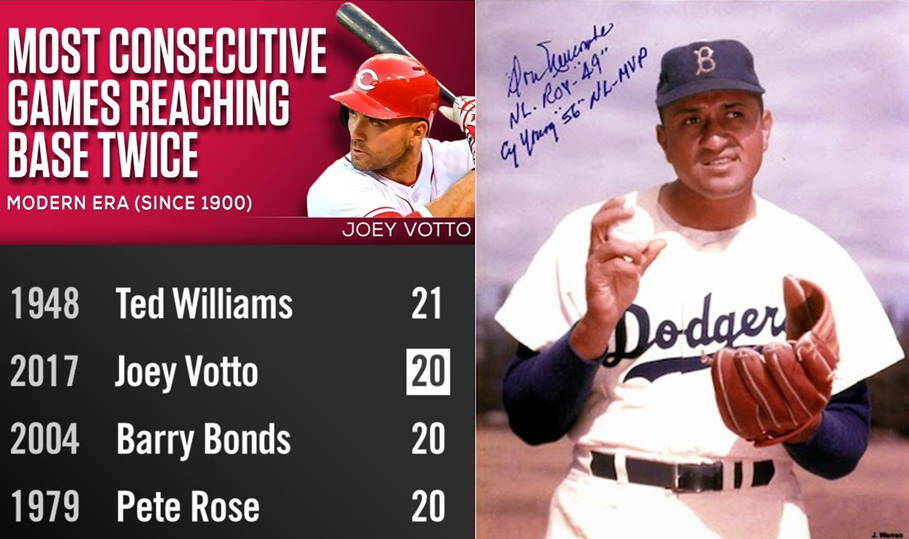 A Record Streak and Overtime Perfection
A Record Streak and Overtime Perfection
In 1949, Ted Williams reached base safely in a record 84 consecutive games. In the 23 Year Franchise League, playing for Jesse Goyette’s Third-Rate Reds, 2015 Joey Votto shatterred that record, putting together a mind-boggling 95-game on-base streak.
Interestingly, in real life Votto challenged another Williams streak in 2017, fallling one game short of Ted’s record, set in 1948, of reaching base at least twice in 21 consecutive games.
Twice in baseball history pitchers have taken perfect games into extra innings, but were unable to complete the feat. (Harvey Haddix threw 12 perfect innings for the Pirates against the Braves in 1959 before losing in the 13th, and Pedro Martinez took a perfect game into the 10th for Montreal against San Diego in 1995 before giving up a hit and being pulled from the game.)
But Don Newcombe did the trick in the 60S PITCHERS LEAGUE II for Keith Mueller’s Crabapples III, tossing 10 perfect innings in a 2-0 win over Purple Haze.
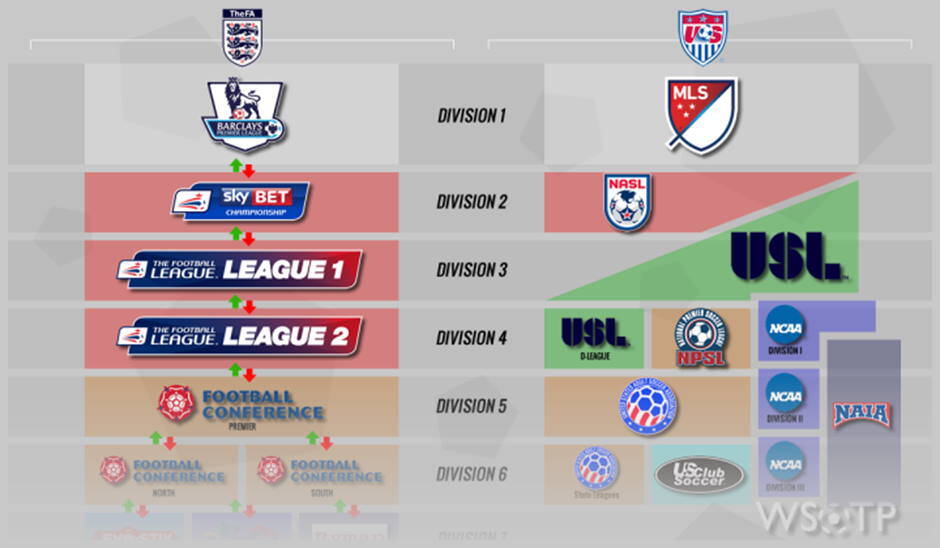 Registration Underway for Season 34 of The Ladder Leagues Random 600 Association
Registration Underway for Season 34 of The Ladder Leagues Random 600 Association
Registration is now open for the Ladder Leagues Random 600 Association Season 34.
For those unfamiliar with them, the Ladder Leagues operate like European soccer, with a ranked leagues structure. At the end of each LL season, the top teams from that season are promoted to higher leagues and the bottom teams relegated to lower leagues for the season to follow.
RA600 leagues draft manually from random limited pools of 600 “classic” (career-rated) players. Heretofore they have been set alternately in the most current season AL and NL eras of play with or without the DH respectively (though this will change beginning in Season 34). All other league parameters (cap, income, injuries, etc) are standard.
The Random 600 Association operates on its own schedule, independent of the Ladder Leagues Standard and SSG Associations.
There were six leagues in Season 33, which played with the DH in the AL 2019 era of play. Season 24 will be played without the DH in the Moneyball era of play, which henceforth will be the era of play for all RA600 seasons.
You can register to play in the upcoming RA600 season on the post under What’s New on your My Teams page.

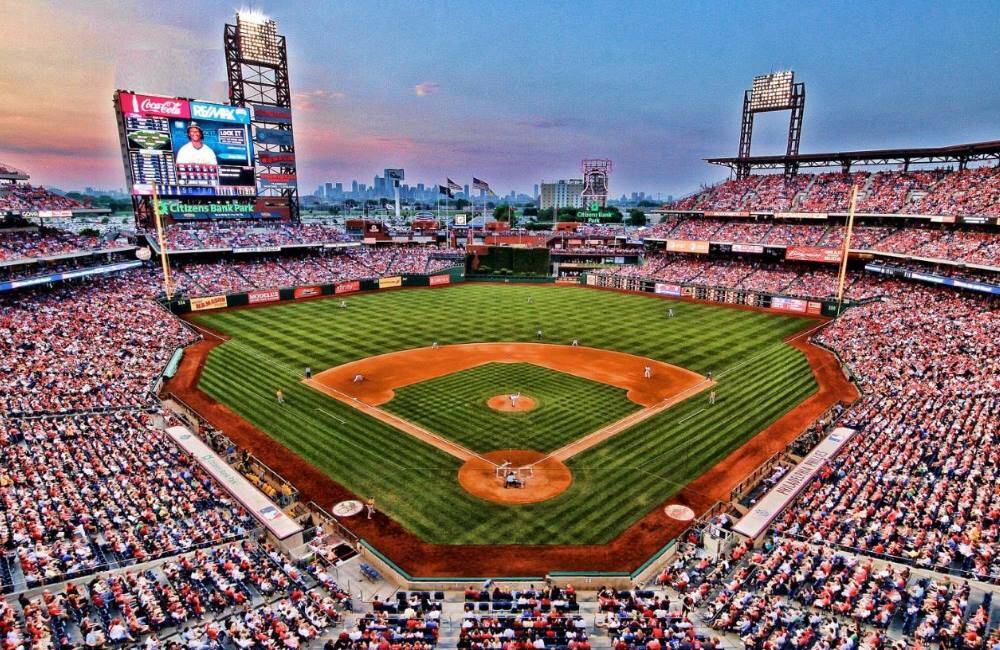
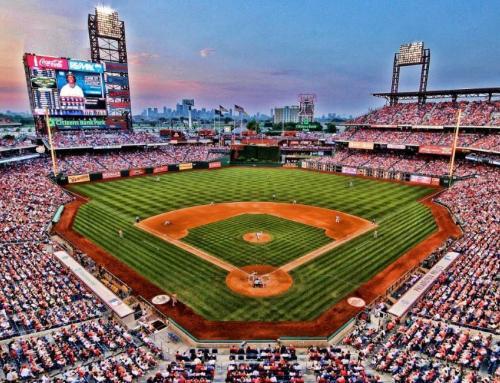
Leave A Comment